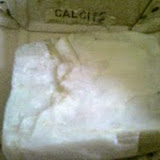
News this week: This is the effect of monsoon floods on people this year in the sub-continent.
Links to more news:

| r-organisms | K-organisms |
| short-lived | long-lived |
| small | large |
| weak, vulnerable | robust, well-protected |
| fast maturation | slow maturation |
| prone to take risks | risk averse |
| opportunistic exploiters | consistent exploiters |
| less intelligent, experienced... | more intelligent, experienced... |
| strong sex drive | weak sex drive |
| reproduce at an early age | reproduce at a late age |
| large number of offspring | small number of offspring |
| small relative size at birth | large relative size at birth |
| little care for offspring | much care for offspring |
| variable population size | stable population size |
 Are you having trouble following our Ecology class? This book was recommended by our seniors. They said it was very helpful.
Are you having trouble following our Ecology class? This book was recommended by our seniors. They said it was very helpful. Ecology,Environment & Resource Conservation
Singh, J.S., Singh, S.P. & Gupta, S.R.This is the first comprehensive textbook of its kind on ecology and environment published in India by three leading ecologists. Every post-graduate student of ecology must have a personal copy.Over the year, the scope of our scientific understanding and technical skills in ecology and environmental science have widened significantly, with increasingly greater emphasis on societal issues. In this book an attempt has been made to give basic concepts of ecology, environmental science and various aspects of natural resources.
ISBN: 8188342556 List Price: INR 595.00 ISBN-13: 9788188342556 Sale Price: INR 595.00 Publisher: Anamaya Publishers Pages: 688 Language: English
 |
| Rock Forming Minerals |

